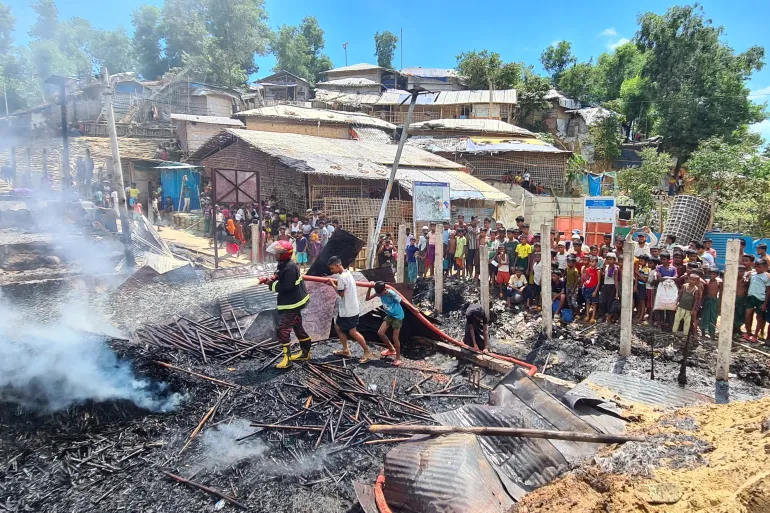A Surge in Violence The United Nations has issued a stark warning as the already fragile situation in Myanmar’s Rakhine State worsens, leading to the displacement of an additional 45,000 Rohingya people. This recent exodus is a consequence of escalating violence, with disturbing reports of beheadings, killings, and widespread arson.
Ceasefire Collapse and Civilian Plight The relative peace of a ceasefire crumbled when the Arakan Army (AA) launched attacks against the ruling military forces last November, a move that shattered the calm that had persisted since the 2021 military coup. The renewed conflict has ensnared the Rohingya, a Muslim minority group that has long faced discrimination and hostility from the majority Buddhist population. Caught between the clashing forces, the Rohingya find themselves in an increasingly precarious position.
The Rohingya Dilemma The AA claims its fight is for greater autonomy for the ethnic Rakhine people, yet this battle for self-determination occurs in a region that is also home to around 600,000 Rohingya Muslims. These individuals have chosen to stay in Myanmar despite the risks, even as over a million of their brethren have sought refuge in Bangladesh, fleeing a military crackdown that has now led to a genocide case in the United Nations.
Displacement and International Appeals Elizabeth Throssell, a spokeswoman for the UN rights office, has highlighted the dire situation in Buthidaung and Maungdaw townships, where recent clashes have driven tens of thousands from their homes. An estimated 45,000 Rohingya have fled to the banks of the Naf River, desperately seeking safety near the Bangladeshi border. Throssell calls for the protection of civilians under international law, while UN rights chief Volker Turk implores Bangladesh and other nations to offer refuge to those in need, emphasizing the importance of global solidarity with Bangladesh as it hosts a significant number of Rohingya refugees.
Bangladesh’s Reluctance and Refugee Crisis However, the response from Bangladesh is one of hesitance, as reported by Al Jazeera’s Tanvir Chowdhury from Cox’s Bazar. With over a million Rohingya already within its borders, the Bangladeshi government is wary of accepting more, leaving many refugees stranded on the Myanmar side of the border.
Testimonies of Terror James Rodehaver, who leads the rights office’s Myanmar team, paints a grim picture of the conditions prompting the mass flight. His team has gathered testimonies and analyzed satellite imagery and online content that suggest Buthidaung town has suffered extensive fire damage. The destruction reportedly began on May 17, shortly after the military withdrew and the AA took control. Survivors recount blocked escape routes and extortion by AA members, painting a harrowing portrait of their journey to safety.
Renewed Attacks and Atrocities In the lead-up to the devastation of Buthidaung, there have been renewed assaults on Rohingya civilians by both the AA and the military, including air strikes. The rights office has documented several beheadings, attributing them with high confidence to the AA, marking a chilling escalation in the conflict.
Continued Concerns The situation remains tense, with the international community closely monitoring the unfolding humanitarian crisis. The plight of the Rohingya in Myanmar’s Rakhine State continues to be a critical issue demanding urgent attention and action.

















































